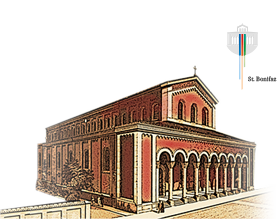- Product range
- History
- Raw materials & brewing process
- Distribution & sales
- Guided Tours
- EMAS environmental certification
- Beer glossary
- Andechs Beer in US
Beer glossary
- Aftertaste
This is the palateful quality and taste of the beer left in the mouth after drinking.
- Alcohol content
The alcohol content of beer is linked to the content of original extract, i.e. the fermentable constituents of the wort. Fermentation converts about a third of these substances into alcohol.
- Aroma hops
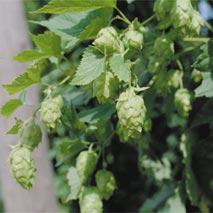 Unlike bitter hops, aroma hops are very rich in essential oils.
Unlike bitter hops, aroma hops are very rich in essential oils.
The Andechs monastery brewery uses exclusively aroma hops.- Beer categories
Beer is categorised according to the original wort content, the percentage of fermentable substances in the wort.
Type Original wort Einfachbier (simple beer) Up to 7% original wort Schankbier (tap beer) 7% to less than 11% original wort Vollbier (full-bodied beer) 11% to less than 16% original wort Starkbier (strong beer) More than 16% original wort, including: Bockbier At least 16% original wort Doppelbock At least 18% original wort - Beer colour
The colour of the beer is defined by the malt. The kilning (drying) heat defines the colour of the malt and hence of the beer: the hotter the kiln, the darker the malt.
- Beerfilter
After the storage period, the bottom fermenting beer runs through a filter unit. Filtration removes the last of the suspended solids (yeast, protein, and hops residue) and clarifies the beer. Top fermenting Weissbier types are bottled and kegged in their naturally cloudy state.
- Beertypes
Beers are classified according to the method used for their fermentation:
Top fermented beers from the Andechs monastery brewery:
- Andechser Weißbier Hell
- Andechser Weißbier Dunkel
- Andechser Weißbier non-alcoholic
- Andechser Weizenbock
This generally extends to:
Altbier, Kölsch, Weizen, Weizenbock, etc.Bottom fermented beers from the Andechs monastery brewery:
- Andechser Vollbier Hell
- Andechser Spezial Hell
- Andechser Export Dunkel
- Andechser Bergbock Hell
- Andechser Doppelbock Dunkel
This generally extends to:
Pils, Export, Lager, Bock, Doppelbock, light and dark full-bodied beer.- Bitterness
Bitterness is the impression of taste between the tongue and the palate. The bitterness of beer is carried mainly by the constituents of the hops, but also by the natural salt content of the brewing water and vegetable tannins from the malt.
- Bitterns
The bitterns are provided by the hops. They lend the beer its characteristic bitter aroma.
- Bottom fermenting
Bottom fermenting beers are made with yeasts that sink to the bottom of the fermenting vat after fermentation. Fermentation takes place here at temperatures up to 9 °C.
- Brew
“Brew” is the name given to a production batch in the brewhouse.
- Brew kettle
“Brew kettle” is another term for wort copper.
- Brewhouse
The brewhouse is fitted with the equipment needed for brewing beer: mash tun, mash copper, lauter tun, wort copper.
- Brewing water
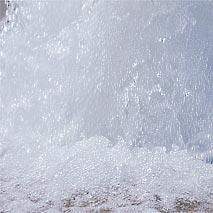 The optimal, consistent quality of water is particularly important for brewing.
The optimal, consistent quality of water is particularly important for brewing.
It must be free of odours and microorganisms and have a neutral taste. Its salt content, above all in the form of calcium and magnesium compounds, contribute to the flavour of the beer.- Calories
The calorie content of beers depends on their type. At 380 kcal (1588 kJ) per litre, the calorie content of beer is equivalent to or less than that of soft drinks.
The calorie content of the Andechs monastery beers are as follows (per half litre):
"Andechser Vollbier Hell" 225 kcal (941 kJ) "Andechser Spezial Hell" 245 kcal (1024 kJ) "Andechser Export Dunkel" 220 kcal (920 kJ) "Andechser Bergbock Hell" 300 kcal (1254 kJ) "Andechser Doppelbock Dunkel" 330 kcal (1380 kJ) "Andechser Weißbier Hell" 225 kcal (941 kJ) "Andechser Weißbier Dunkel" 235 kcal (982 kJ) - Carbonic acid
The carbonic acid generated during fermentation is important for the keeping quality and fresh flavour of the beer.
- Draff
“Draff”, or “spent grains”, is the name given to the malt residue, primarily malt chaff, that the lauter tun separates from the wort. It is used in Andechs for making the bread “Andechser Brot mit Biertreber”.
- Fermentation
Fermentation is the process in the fermenting vat when the yeast added to the wort converts maltose into alcohol, carbonic acid, and aromatics.
- Fermentation cellar
The main fermentation takes place in the fermentation cellar. The yeast added to the wort converts maltose into alcohol and carbonic acid. The ideal temperatures for this process are 4–20 °C. Depending on the beer type, the main fermentation takes about two to nine days.
- Fermenting vat
Fermentation takes place in the fermenting vat.
- Germination
During this process, the substances in the grain, predominantly starch and proteins, are rendered soluble in water and therefore suitable for brewing. Also enzymes are activated that break down carbohydrates into sugar.
- Green beer
“Green beer” is the name given to beer that has not yet fully matured after fermentation.
- Green malt
Malting grain is steeped and germinated to form green malt, which is then dried and roasted in the kiln.
- Head
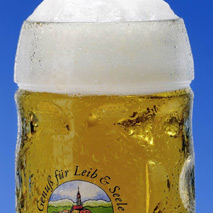 The beer develops its head of foam when it is tapped correctly. The hops and other constituents of the beer contribute to a firm head.
The beer develops its head of foam when it is tapped correctly. The hops and other constituents of the beer contribute to a firm head.- Hops
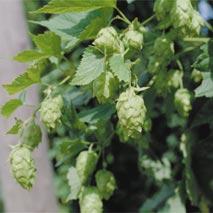 Beer brewing uses the blooming, but still unpollinated female umbels or cones of the hop plant that can grow up to seven metres in length. These blooms bear small, yellowish green seeds that contain bitterns and aromatic oils. These lend the beer its characteristic bitter flavour. The tannins enhance the beer’s keeping qualities. Moreover, hops also contribute to the firmness of the foam or head.
Beer brewing uses the blooming, but still unpollinated female umbels or cones of the hop plant that can grow up to seven metres in length. These blooms bear small, yellowish green seeds that contain bitterns and aromatic oils. These lend the beer its characteristic bitter flavour. The tannins enhance the beer’s keeping qualities. Moreover, hops also contribute to the firmness of the foam or head.
The Andechs monastery brewery uses exclusively aroma hops from the Hallertau to the north of Freising. It is the largest contiguous hop growing region in the world.- Hot wort
Hot wort is the ready wort that leaves the brewhouse for the fermentation cellar.
- Keg
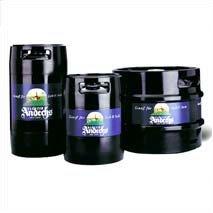 “Keg” is the name give to the cylindrical metal barrels with built-in filler pipe. These barrels are fitted with a special connecting system that has many advantages, particularly under the hygiene standards.
“Keg” is the name give to the cylindrical metal barrels with built-in filler pipe. These barrels are fitted with a special connecting system that has many advantages, particularly under the hygiene standards.
The Andechs monastery brewery uses exclusively kegs for its beers.- Kilning
Kilning applies heat that stops germination in the “green malt”. This drying and roasting give rise to important flavourings in the wort. The temperature defines the colour of the malt and hence of the beer: the hotter the kiln, the darker the malt.
- Lauter tun
The lauter tun separates the solid (draff) and liquid (wort) constituents of the mash.
- Lent beer
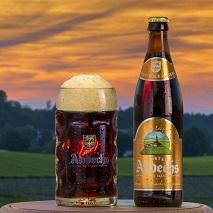 Lent beer is a particularly strong, nutritious beer that was formerly drunk during Lent. It was also known as “liquid bread”.
Lent beer is a particularly strong, nutritious beer that was formerly drunk during Lent. It was also known as “liquid bread”.
The Andechs monastery brewery offers this beer type as “Andechser Doppelbock Dunkel”.- Main fermentation
During this process in the fermentation cellar, the yeast converts maltose into alcohol and carbonic acid.
- Malt
Steeping, germinating, and kilning converts the malting grain into (brewing) malt which is then stored in the malt silo. These “malt kernels” have a characteristic aroma.
- Malt house
The malt house produces the malt from the grain by steeping it in water and letting it germinate. Applying heat to this “green malt” stops it from germinating. The malt thus obtained can then be used for brewing beer.
The Andechs monastery brewery purchases malt that has been produced exclusively by selected malt houses.
- Malting barley
Malting barley is the most important ingredient for beer. Since the Purity Law was issued in 1516, only barley may be used in Bavaria for the production of malt. Yet wheat malt is needed for the brewing of Weissbier. (The brewing of Weissbier was a state monopoly in Bavaria at that time, so wheat was not included in the Purity Law.)
Two-row “nodding” summer barley has a low protein content, and so is the preferred choice for brewing. The quality is defined by the odour, size, and shape of the grains as well as the quality of their chaff and internal structure. Also important are their viability and constituents.
Before they can be used for brewing, the grains must be “malted”, i.e. steeped, germinated, and kilned.- Mash
The mash is a mixture of milled malt and water that the mash tun transfers to the mash copper.
- Mash copper
The mash copper is used to boil the mash. Boiling converts starch into sugar, breaks down protein, and dissolves flavourings and vitamins.
The Andechs monastery brewery transfers only some of the mash to the mash copper. After boiling, it is returned to the mash tun. Its retained heat then passes through the rest of the mash. This process is repeated several times in classical multiple mashing, e.g. for Andechser Export Dunkel or the renowned Andechser Doppelbock Dunkel. After mashing, the mash passes to the lauter tun.
- Mash tun
This contains the so called mash, the mixture of milled malt and water.
- Milling
The malt is milled – with the addition of water in the Andechs monastery brewery – and afterwards transferred to the mash tun.
- Multiple mashing
When brewing with classical multiple mashing, e.g. for its Andechser Dunkel beer types, the Andechs monastery brewery transfers only some of the mash to the mash copper. After boiling, it is returned to the mash tun. Its retained heat then passes through the rest of the mash. This process is repeated in multiple mashing. After mashing, the mash passes to the lauter tun. This method lends the dark Andechs beers their particularly mouthcoating malty aroma.
- Original extract
“Original extract” is the name given to the unfermented wort’s content of fermentable sugar that is dissolved out of the malt under the action of water. Fermentation causes alcohol and carbonic acid to form out of the original extract.
The contents of original extract and alcohol are closely linked, in the approximate ratio of 3 to 1. The original extract content is specified in percent by weight (grams per 100 grams). Beers are grouped into four beer types according to their original extract content:Simple beer max 7% original extract by weight Draft beer 7% to less than 11% original extract by weight Vollbier 11% to less than 16% original extract by weight Strong beer over 16% original extract by weight Bock min 16% original extract by weight Double bock min 18% original extract by weight - Osmosis
Osmosis is a very important process in nature. It is closely associated with the exchange of water and minerals through cell walls. Osmotic forces are of great importance for the exchange of water between the inside of a cell and the extracellular environment.
While the cell walls allow water to pass through unhindered, they are quasi only semi-pervious to minerals. Therefore, such membranes are also called “semi-permeable” in living systems.
When two chambers A and B with the same volume (100 ml) with a different concentration of particles (20 particles in chamber A and 10 particles in chamber B) are brought into contact with each other through a semi-permeable membrane, this membrane acts selectively. It allows the solvent to pass, but none or only a few of the dissolved particles. Since the different solutions strive to equalise their concentrations, solvent diffuses from chamber B to chamber A until the particle concentration is the same in both.
This process of a membrane’s permeation by the solvent is called osmosis. The osmosis process ends when the particle concentration is the same in both chambers. When 33.3 ml of liquid has passed from chamber B to chamber A, the concentration has equalised. The water column in chamber A exerts hydrostatic pressure on the membrane, referred to as osmotic pressure.
The reverse osmosis principle
The osmotic process can also take place in reverse. When pressure is built up on the side with the concentrated solution (e.g. tap water) that is able to overcome the osmotic pressure, the solution flows through the membrane in the opposite direction. Only the solvent (e.g. water) can pass through, but not the dissolved substances.
(Source: Gesellschaft für Wasser und Gesundheit mbH)- Output
This is the quantity of beer a brewery sells within one year.
- Secondary fermentation
Secondary fermentation takes place in the storage cellar, when the “green beer” matures at about 0 °C. This process gives rise to additional carbonic acid that binds with the beer. Large pressurised tanks are therefore used. In the Andechs monastery brewery, secondary fermentation takes up to six weeks.
- Sparging
Procedura di acquisizione del mosto pulito
- Starch
Enzymes break down the starch in the grain into sugar that fermentation later converts into alcohol.
- Steeping
Steeping the grain in water causes it to germinate.
- Storage cellar
The storage cellar is where secondary fermentation takes place, when the “green beer” matures for several weeks at about 0 °C.
- Top fermenting
In top fermenting beers, the yeasts bind with the carbonic acid after fermentation and float to the top of the fermenting vat. Fermentation takes place here at temperatures up to 20 °C.
The Andechs monastery brewery ferments its Weißbier types in historical open fermenting vats in the fermentation cellar under the Andechser Bräustüberl.- Unfiltered
Unfiltered beer retains its turbidity caused e.g. by yeast and protein and is therefore naturally cloudy.
- Vitamins
Beer contains primarily B vitamins (B1, B2, B6, biotin, niacin, folic acid, and pantothenic acid).
- Whirlpool
The primary task of the whirlpool is to separate out protein and hop residue. This separation is a physical process involving centripetal and centrifugal forces.
- Wort
This is the liquid that remains after the separation of solid and liquid mash constituents in the lauter tun. It contains all of the malt kernels’ soluble substances.
- Wort cooler
The wort cooler uses ice water to reduce the temperature of the wort extracted in the wort copper until the wort reaches the level for fermentation.
- Wort copper
The wort copper, also known as the brew kettle, boils the wort together with the hops. This sterilises the wort, which is important for the beer’s keeping quality. The wort is boiled down (evaporated) until the required quantity of original extract is reached. After boiling, the wort must be cooled to the ideal temperatures for the subsequent fermentation. This is now called the brew or the cold wort.
- Yeast
Yeasts are microorganisms that initiate fermentation in the wort, i.e. they convert maltose into alcohol and carbonic acid. At the same time, they also produce the unmistakable aromatics that contribute to the flavour of Andechs beer specialities.



